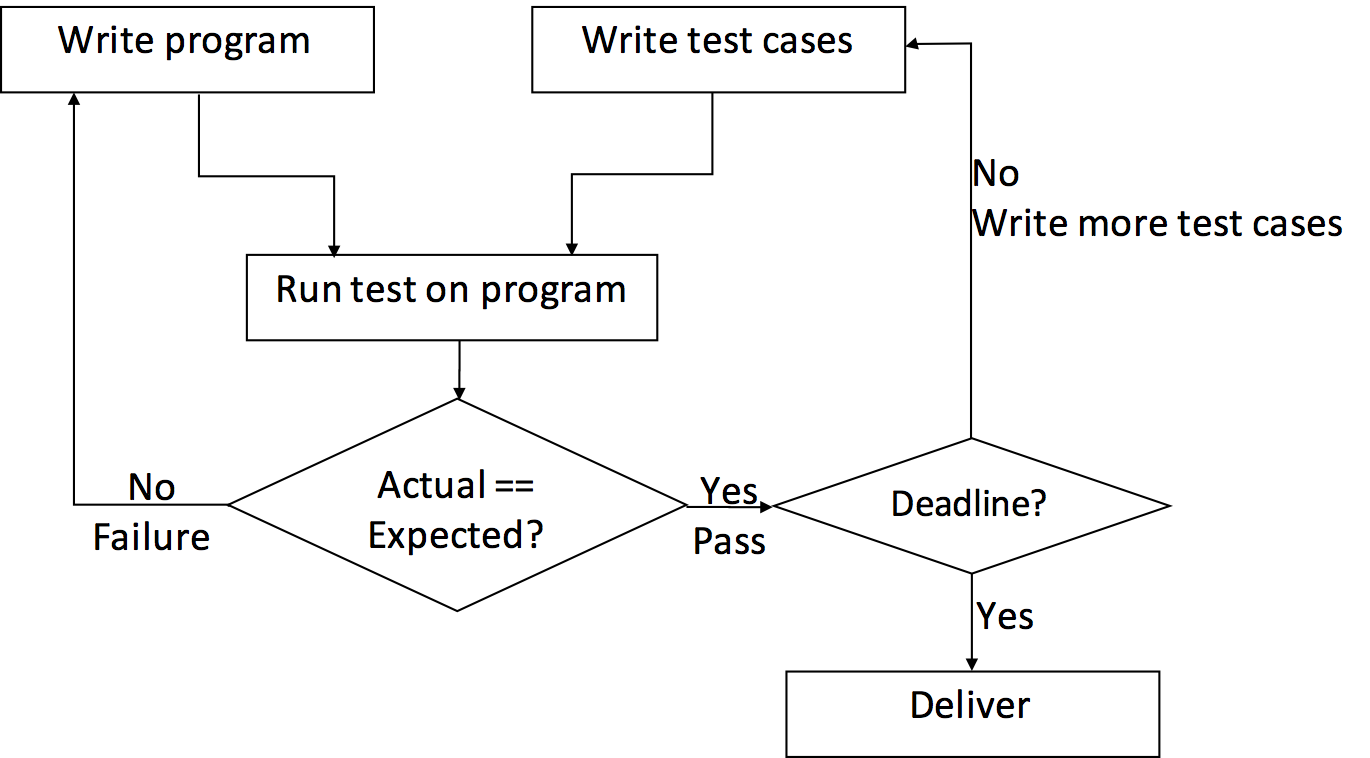Testing Process
Program requirements document what the customer wants a program to do. The requirements define the expected results of a test case. If a test case fails, meaning the actual results of the program do not match the expected results, then we have not met our requirements. A test failure implies a debugging session to find the underlying fault is necessary. Figure 1 shows the flow for generating and running test cases on a program.

Developers start by writing their program and test cases. These tasks may be done simultaneously or asynchronously depending on personal preference; however, both the source code and the test cases are required before any tests can be run on a program.
A test case is run by executing the program with the test inputs specified by a test case. If the actual output does not match the expected output, the test fails. The failure helps guide developers to the underlying fault to fix the mistake.
Passing tests increase confidence that a program meets the program requirements. If there is more time before a deadline, additional tests will increase confidence further. While software testing is useful for finding underlying faults, no amount of testing can unequivocally demonstrate the absence of faults in your code. Additional testing will provide some confidence that your program will perform as expected most of the time, at least for the cases you tested.
Ultimately, your product must be delivered. Plan your time to allow for sufficient testing of the requirements to ensure delivery of a high quality product.